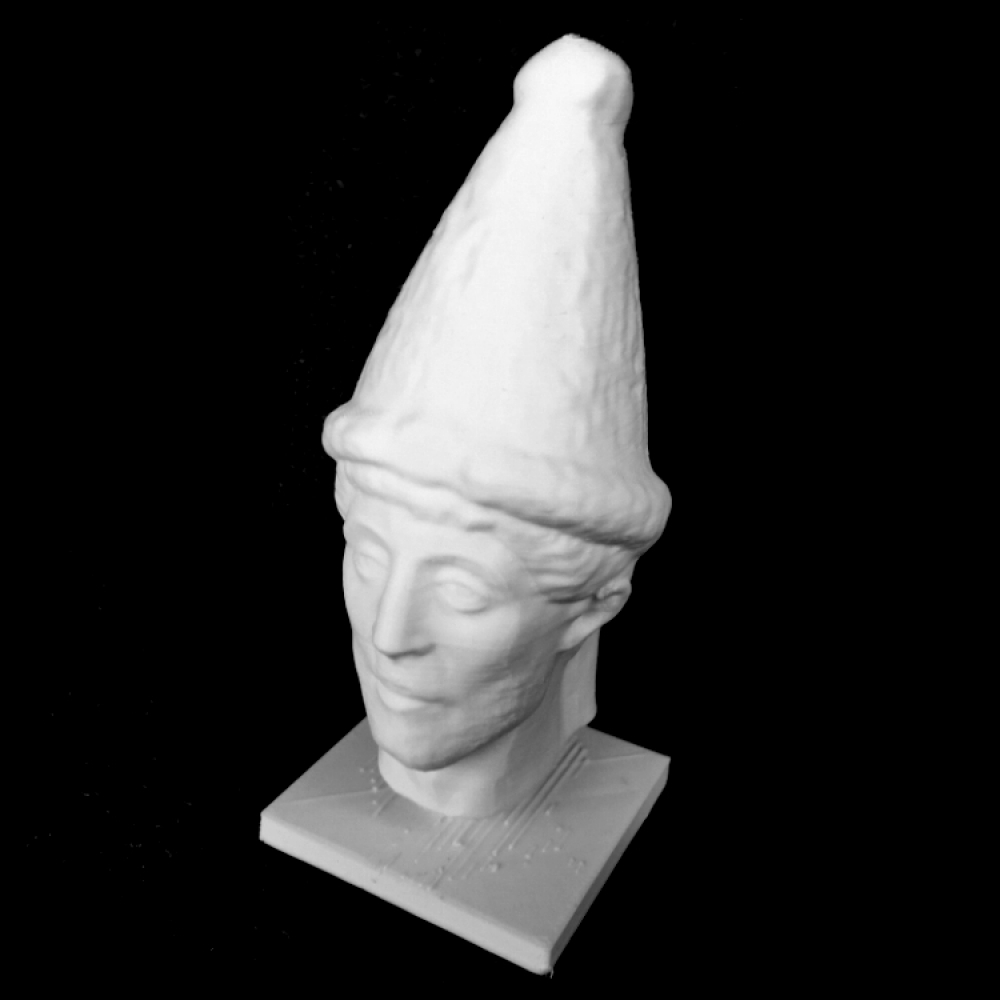
Head of a Priest at The Dallas Museum of Art, Texas
myminifactory
This Roman imperial portrait head, which is in excellent condition, adds to two areas of the Museum's ancient art collection: Roman portraiture and Near Eastern art. Roman portraits from the late second to the early fourth century A.D. are frequently masterpieces of subtle modeling and expressive psychology. The native Roman taste for realism in portraiture was broadened to include suggestions of personality and even religious temperament during this period. The face and hair of this portrait head are carved with the rich, sensuous realism of portrait sculpture in this cosmopolitan era of the Roman Empire. However, the priestly role represented by the man's conical headdress is specific to the Asian parts of the Roman Empire. Similar elaborate representations of priests are found in Asia Minor and in the arts of Palmyra, as well as in Syria proper, where this head originated. Many examples of Palmyrene portrait sculpture may be found in museums in both the United States and Europe. In a Palmyrene funerary group in the National Museum, Damascus, depicting a husband and wife, the man wears a headdress that fully covers his hair and is decorated with a wreath and priest's bust, indicating his profession. The relief of Aphlad, also in the National Museum, Damascus, depicts a priest in a cap similar to the one on the Dallas Museum of Art head, but with his hair showing under its rim. Other analogies to this head may be seen in Anatolian sculptures of priests, such as a fine funerary portrait in the Adana Museum, Turkey, in which the headdress indicates the man's role as a priest in his lifetime. The conical headdress goes back centuries in Near Eastern religious art. Originally the mark of a divinity, by the time of the Roman Empire it was the regalia of priests of various Syrian and Anatolian deities. A priest of the Anatolian mother-goddess Cybele in the museum in Ostia, Italy, wears such a headdress. The well-known frescoes from a synagogue in Dura-Europus, Syria, now in the Damascus museum, also show priests wearing such headdresses. However, the idealized nude Greek figures ornamenting the headdress on the Dallas Museum of Art head represent a complete fusion of Near Eastern beliefs and Greco-Roman style. The incised eyes, which give the figure a hypnotic intensity, are typical of such late Roman portraits and are often emphasized to suggest the spiritual state of the person represented. The syncretic character of religion and culture in the eastern parts of the Roman Empire are well represented by this handsome head. It carries on the tradition of Roman portraiture, represented by the Dallas Museum of Art's two great second-century portraits of two young men. (credit; Dallas Museum of Art) This object is part of "Scan The World". Scan the World is a non-profit initiative introduced by MyMiniFactory, through which we are creating a digital archive of fully 3D printable sculptures, artworks and landmarks from across the globe for the public to access for free. Scan the World is an open source, community effort, if you have interesting items around you and would like to contribute, email stw@myminifactory.com to find out how you can help.
With this file you will be able to print Head of a Priest at The Dallas Museum of Art, Texas with your 3D printer. Click on the button and save the file on your computer to work, edit or customize your design. You can also find more 3D designs for printers on Head of a Priest at The Dallas Museum of Art, Texas.
